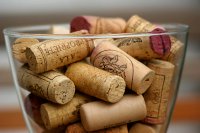 It’s quite illuminating that the following study has not yet reached the wider media. Without wishing to be too cynical, I do wonder whether that’s because the journal in which the work is published does not use a highly aggressive press office and marketing machine like so many other medical journals, which never seem to be out of the news. The results in this paper are just as important and the implications perhaps even more far reaching than many other results that attract instantaneous (under embargo) media attention. Anyway, take a look and judge for yourself, oh and let me know afterwards if you think the headline for this post is way off mark.
It’s quite illuminating that the following study has not yet reached the wider media. Without wishing to be too cynical, I do wonder whether that’s because the journal in which the work is published does not use a highly aggressive press office and marketing machine like so many other medical journals, which never seem to be out of the news. The results in this paper are just as important and the implications perhaps even more far reaching than many other results that attract instantaneous (under embargo) media attention. Anyway, take a look and judge for yourself, oh and let me know afterwards if you think the headline for this post is way off mark.
Alcohol blamed for oral cancer risk – A large-scale statistical analysis of mouth and throat cancer incidence over a long period of time has looked at possible correlations between exposure to industrial chemicals, dust and alcoholic beverages in a wide variety of individuals in different occupations across Finland. The perhaps surprising conclusion drawn is that alcohol consumption rather than industrial chemicals or dusts is the critical factor associated with this form of cancer. Get the full story in this week’s edition of my SpectroscopyNOW column here.
I suppose it’s a little ironic that in the same edition of Spec Now, I’m also writing about how to make beer taste fresher and last longer on the shelf. NMR spectroscopy, and a chromatography sniff test have yielded results that could help brewers improve the flavour and shelf-life of beer thanks to work by scientists in Venezuela. The team has identified alpha-dicarbonyls as important compounds that reduce beer’s flavour and point to a new approach to brewing beer that stays fresher, longer. Take a sip here…
Meanwhile, another subject of mixed messages regarding health benefits is that perennial favourite chocolate. To maintain the seductive and lustrous brown gloss of chocolate, so enticing to chocoholics the world over, food technologists must find a way to prevent fat bloom from forming on the surface and turning the surface an unappealing grey. Now, scientists from Canada and Sweden have found new clues to understanding the microstructure of chocolate and what happens when it turns grey with age. More…
Finally, some straight chemistry with absolutely no hint of biomedicine, health, or pharmaceutical implications (yet). A novel structure studied using X-ray crystallography hints at the possibility of a carbon atom that, at first site seems to be a little different from the conventional textbook view. Could the oldest rule of organic chemistry have been broken at last, or is low atomic separation being equated too keenly with the presence of a bond, or could there be something else afoot, as Steve Bachrach suggests? Read on…